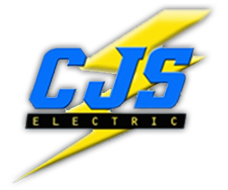Some of our residential electrician services include:
|
We offer a wide variety of residential electrician services covering all of your electrical service needs. There are many other electrical services that an electrician can offer, so please make sure to contact our office at 813-887-1090 if you do not see the electrical service that you are interested in listed above. We will get a highly trained electrician out to work on it!
|
Common Residential electrical problems:
Light bulbs are burning out at a high rate. There can be various reasons for this, depending especially on how widespread the problem is in your home and whether the bulbs you buy are ideal for your situation.
Some lights are flickering or blinking. This represents a poor connection somewhere along the circuit. If the blink happens through much of the home, a main wire connection could be the one having the trouble.
A recessed light (flush to the ceiling) goes off sometimes and later works again. This is probably its built-in safety “Thermal overload” that is meant to keep the light from overheating. It is telling you that the wrong style or wattage of bulb is being used or that ceiling-space insulation is too close around the light.
Some lights get extra bright while others run dim. Bulbs may even be popping, and an electronic appliance or two may have died recently. This is a condition that will continue to be destructive to equipment in your home. In many cases, this is caused by a bad connection on the main neutral (or a bad neutral that is shared by just two circuits).
Half of an outlet works, but the other half doesn't always work. Even after years in your home, you may not be aware that one half may be energized by a wall switch. The other common cause is that use over time has loosened the hold that one half has on the cords you plug into it.
Outlets have gone dead in bathrooms, garage, kitchen, or outdoors. The outlets in these areas have been required since the '70s to go dead by means of a Ground-Fault Interrupter ("GFI" or "GFCI"), when it senses a problem that might shock you. A tripped GFI is the most common reason for those outlets to go dead.
A circuit breaker often trips when the microwave or other high-wattage equipment is used. If the tripping is not immediate, these high-wattage items (when running along with a few lights for awhile) are probably too much for the circuit. If these "overloads" can't be avoided by limiting the use of other things on the circuit, a new separate circuit for the item drawing the most load is the best solution.
A wall switch gets rather warm. Dimming switches do this -- it is normal for them when running 600 watts worth of bulbs (or less). Heat at a receptacle is another matter; a connection there needs immediate improvement.
A switch does not seem to control anything at all. If you are not the first owner of this home or if you replaced receptacles recently, switched receptacles may have been disabled by how they were replaced. This applies mainly to bedrooms and living rooms.
If you are experiencing any of the above common problems in your home (or other problems), and need assistance with diagnosis or repair, please contact our office directly at 813-887-1090.
Some lights are flickering or blinking. This represents a poor connection somewhere along the circuit. If the blink happens through much of the home, a main wire connection could be the one having the trouble.
A recessed light (flush to the ceiling) goes off sometimes and later works again. This is probably its built-in safety “Thermal overload” that is meant to keep the light from overheating. It is telling you that the wrong style or wattage of bulb is being used or that ceiling-space insulation is too close around the light.
Some lights get extra bright while others run dim. Bulbs may even be popping, and an electronic appliance or two may have died recently. This is a condition that will continue to be destructive to equipment in your home. In many cases, this is caused by a bad connection on the main neutral (or a bad neutral that is shared by just two circuits).
Half of an outlet works, but the other half doesn't always work. Even after years in your home, you may not be aware that one half may be energized by a wall switch. The other common cause is that use over time has loosened the hold that one half has on the cords you plug into it.
Outlets have gone dead in bathrooms, garage, kitchen, or outdoors. The outlets in these areas have been required since the '70s to go dead by means of a Ground-Fault Interrupter ("GFI" or "GFCI"), when it senses a problem that might shock you. A tripped GFI is the most common reason for those outlets to go dead.
A circuit breaker often trips when the microwave or other high-wattage equipment is used. If the tripping is not immediate, these high-wattage items (when running along with a few lights for awhile) are probably too much for the circuit. If these "overloads" can't be avoided by limiting the use of other things on the circuit, a new separate circuit for the item drawing the most load is the best solution.
A wall switch gets rather warm. Dimming switches do this -- it is normal for them when running 600 watts worth of bulbs (or less). Heat at a receptacle is another matter; a connection there needs immediate improvement.
A switch does not seem to control anything at all. If you are not the first owner of this home or if you replaced receptacles recently, switched receptacles may have been disabled by how they were replaced. This applies mainly to bedrooms and living rooms.
If you are experiencing any of the above common problems in your home (or other problems), and need assistance with diagnosis or repair, please contact our office directly at 813-887-1090.
























